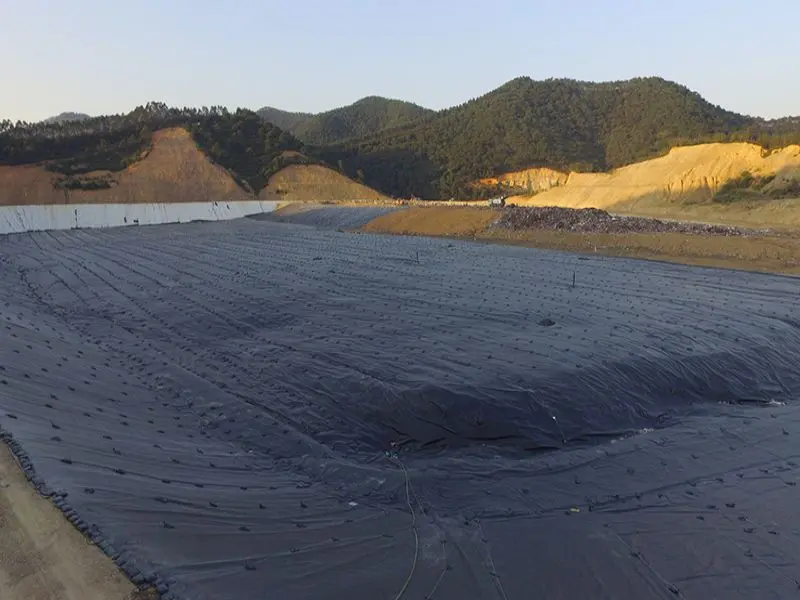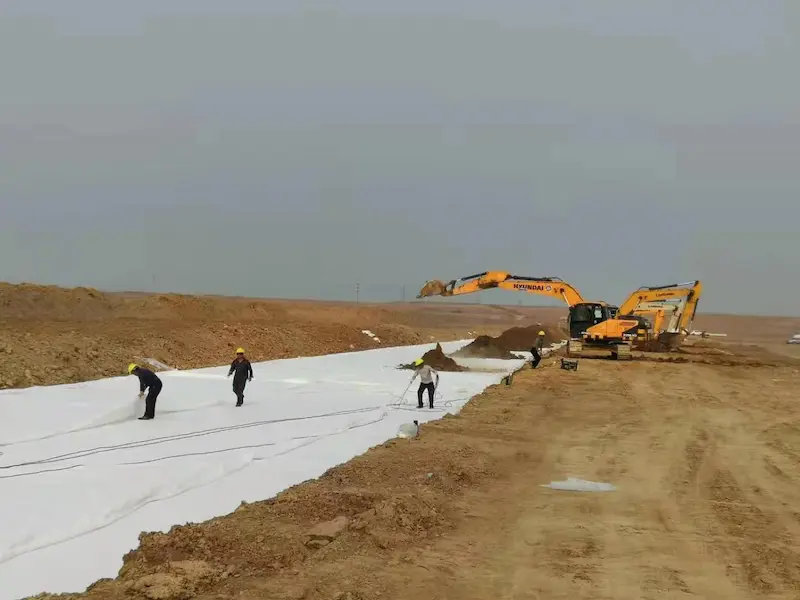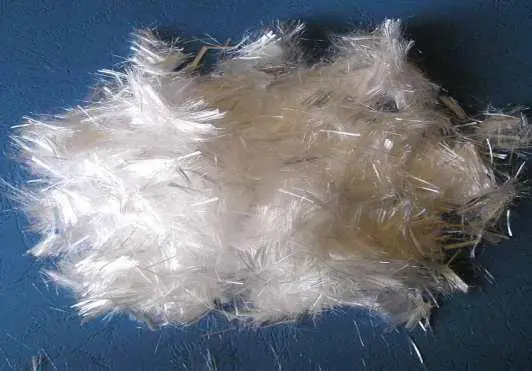In this article, we explore the various applications of geosynthetic materials in road construction and their significant contributions to the enhancement of road infrastructure worldwide.
Reinforcement for Enhanced Stability:Geogrids, a common geosynthetic material, are employed to reinforce the base course of roads. Strategically placed within the soil or aggregate layers, geogrids distribute loads more effectively, mitigating issues like rutting and increasing the overall stability of the road.
Stabilization and Separation:Geotextiles serve as a vital component in stabilizing soil and preventing the intermixing of granular materials with finer subgrade soils. By acting as a separation layer, geotextiles prevent the migration of fines into the aggregate base, maintaining the integrity of the road structure.
Efficient Drainage Systems:Geocomposites, including geocomposite drains, contribute to effective water management within the road structure. These materials provide drainage paths, preventing water accumulation that could weaken the subgrade and base layers, ultimately ensuring a longer lifespan for the road.
344191.webp)
Erosion Control and Vegetation Establishment:Geotextiles and erosion control mats play a crucial role in preventing soil erosion on embankments, slopes, and roadside areas. These materials stabilize the soil, protect against surface runoff, and facilitate vegetation growth, promoting environmental sustainability.
Pavement Overlay and Reflective Crack Control:Specialized asphalt geocomposites are designed to control reflective cracking in asphalt overlays. These materials enhance bond strength between pavement layers and contribute to the durability of the road surface, reducing maintenance needs over time.
Retaining Walls and Slope Reinforcement:Geosynthetic materials such as geogrids and geotextiles find applications in constructing retaining walls and reinforcing slopes. Geogrids provide stability to soil structures, while geotextiles prevent soil loss and assist in establishing vegetation for ecological balance.
Soil Stabilization for Improved Load-Bearing Capacity:Geosynthetic materials are utilized in combination with soil stabilization techniques to improve the load-bearing capacity of road foundations. This proves particularly beneficial in areas with poor soil quality, ensuring the long-term integrity of the road structure.
Pavement Reinforcement with Geocells:Geocells, three-dimensional honeycomb-like structures made from geosynthetic materials, offer load distribution and support by being filled with soil or aggregate. These cells enhance the pavement structure, especially in areas with soft subgrade conditions.
165084.webp)
The integration of geosynthetic materials in road construction has ushered in a new era of innovation and efficiency in civil engineering. From reinforcing the base course to providing efficient drainage solutions, these materials address a myriad of challenges in road infrastructure development. As we move forward, the continued exploration and application of geosynthetic technologies promise to further optimize road construction practices, ensuring safer, more durable, and sustainable transportation networks for future generations.
List and function
What geosynthetics are used in road construction? What is the role of each? These will provide feasible ideas for road construction design plans.
In road construction, a variety of geosynthetic materials are used, each with its own unique role and function. The following is a list of some common geosynthetic materials and their functions:
Geogrids
Function: Enhance the tensile strength of the soil, used to reinforce the soil and improve the stability of the base layer. The ground grid is usually embedded in the soil to effectively disperse the load, reduce settlement and deformation, and improve the bearing capacity of the roadbed.
Geotextiles
Function: Mainly used for soil separation, filtration, reinforcement and protection. As a separation layer, it can prevent soils of different particle sizes from mixing; as a filter layer, it can prevent soil particles from being washed away without hindering the flow of water; as a reinforcement layer, it can improve the tensile strength of the soil; as a protective layer, it can slow down the flow of water. Or wave erosion of soil.
Geogrids (Geocells)
Function: Provide a three-dimensional support structure, filled with soil or gravel, for soil reinforcement and stabilization. Geogrid can prevent lateral displacement of soil, increase the shear strength of soil, and is suitable for slope stabilization and roadbed reinforcement.
Geocomposites
Function: It is composed of a combination of different geosynthetic materials and has multiple functions, including drainage, isolation, reinforcement, etc. For example, drainage geotextiles can be used to improve the drainage performance of the roadbed and improve the stability of the road surface.
Geosynthetic Clay Liners (GCLs)
Function: Composed of a bentonite layer sandwiched between two or more layers of geotextile, it is used to waterproof and block harmful substances. Geomats are often used in the construction of waterproofing layers, such as dams, pools and tunnels, to prevent water penetration.
Geocomposite Drains
Function: Provides fast and effective drainage channels for handling excess moisture in roadbeds and other structures. This helps prevent soil softening, settling, and other moisture-related problems.
Geomembranes
Function: Used to waterproof and block harmful substances, usually used for bottom coverings and other places where water tightness needs to be provided. They are widely used in water conservancy projects, landfills and chemical industries.
The selection and combination of these geosynthetics depends on specific project needs and soil conditions. They work together in road construction to increase the strength, stability and durability of roads while reducing reliance on natural resources.

Plan
The design of geosynthetics in road construction is usually based on specific engineering requirements and soil conditions. Here are some common design options and application scenarios:
Base reinforcement design
Geosynthetics: Geogrids or Geotextiles.
Design solution: Use grid or geotextile in the subgrade base layer to enhance the tensile strength of the soil and reduce settlement and deformation. The ground grid can be embedded in the soil to disperse the load and improve the bearing capacity of the roadbed.
974467.webp)
Subgrade and ramp stabilization design
Geosynthetics: Geocells (Geogrids), Geotextiles (Geotextiles).
Design solution: Use geogrids to reinforce roadbeds and ramps to prevent lateral soil displacement. Geotextiles can be used to separate and reinforce different soil layers, improving overall stability.
Drainage system design
Geosynthetics: Geocomposites (geostrips, drainage geotextiles), Geonets (geotubes).
Design plan: Add drainage geotextile strips or drainage geotextile strips to the subgrade structure to improve the drainage performance of the subgrade. Geotubes can be used to provide quick, effective drainage channels.
Waterproof design
Geosynthetics: Geomembranes, Geosynthetic Clay Liners.
Design Solution: Use geomembranes or geomats in areas where waterproofing is required, such as bridge supports, tunnel walls and dam bases. These materials provide an effective waterproof layer that prevents moisture from penetrating.
609383.webp)
Reflective crack control design
Geosynthetics: Geocomposites (reflective crack control geostrips, geostrips).
Design Solution: Use specially designed geostrips in the pavement overlay to control the propagation of reflective cracks. These materials can reduce the impact of pavement cracks on the overall structure.
Turf protection design
Geosynthetics: Geotextiles.
Design Solution: Use geotextiles in areas where turf protection is required to prevent soil erosion, turf trampling and maintain vegetation growth.
The choice of these design options depends on specific soil conditions, engineering needs and environmental requirements. When developing a design plan, soil analysis, engineering evaluation and performance testing are often required to ensure that the selected geosynthetic materials can best meet the requirements of the project and increase the strength and durability of the road structure.
Construction requirements
The construction requirements for geosynthetics in road construction are crucial to ensure that the materials function effectively and improve the stability of the road structure. Here are some common construction requirements:
Material quality inspection
Before construction begins, conduct a comprehensive quality check on the geosynthetics. Ensure materials meet specification requirements and are free from breakage, contamination or other defects.
Material laying and installation
Properly lay and install geosynthetic materials according to design requirements. Make sure the material is flat, taut and free of wrinkles or waves.
Seams and connections
For large areas of geosynthetics, make sure seams and connections are strong and tight to avoid cracks or loosening. Use appropriate joining methods such as welding, stitching or joint bonding.
Edge fixation
Additional fastening at edges and joints to prevent material edges from loosening or curling. This can be accomplished by burying soil, reinforcing tape, or other means of edge protection.
Construction environmental conditions
Carry out construction in suitable weather conditions and avoid working in strong winds, heavy rain or extreme temperatures. Pay special attention to the installation of geosynthetics in cold weather to avoid brittle cracking.
Soil preparation
Before laying geosynthetic materials, ensure that the subgrade soil surface is smooth and clear of sharp rocks, tree roots, or other objects that may cause damage to the material.
Drainage design
For areas that require drainage, ensure that the geosynthetic materials are laid correctly and will not affect the smooth flow of drainage channels. Use drainage geostrips or other drainage facilities to improve drainage.
Safety measures
Take appropriate safety measures on construction sites to ensure the safety of workers and other related personnel. This includes using personal protective equipment, marking construction areas and following safe operating procedures.
Recording and monitoring
Document the geosynthetic installation process and conduct regular monitoring. Check whether the material is damaged or deformed, and take repair measures in a timely manner.
Training and Qualifications
Ensure construction personnel have the necessary training and qualifications to properly install and handle geosynthetics. This helps avoid construction errors and material damage.
The above requirements are general, and specific construction requirements need to be formulated in detail based on the specific conditions of the project and the type of geosynthetic materials used.
321731.webp)
How to calculate dosage
The calculation of the amount of geosynthetics used in road construction usually involves the consideration of the design requirements of the project, the soil conditions, and the specific type of geosynthetics. Here's a simple calculation with an example:
Calculation steps:
Determine the design requirements: According to the design requirements of the road engineering, including the stability of the base layer, drainage requirements, waterproofing requirements, etc., determine the specific parts and functions that need to be used geosynthetics.
Understand soil conditions: Conduct a soil survey to understand the properties of the subgrade soil, including particle size, shear strength, etc., to determine the type and specification of geosynthetics.
Choosing the right geosynthetics: Select the appropriate type and specification of geosynthetics according to the design requirements and soil conditions. Different materials have different uses and effects in different projects.
Calculate Area and Thickness: Determine the area where the geosynthetics need to be laid and calculate the required thickness according to the design requirements. This usually involves the length and width of the area.
Calculate Dosage: Use the following formula to calculate the amount of geosynthetics required:
Dosage = Area × Thickness × Density Dosage = Area × Thickness × Density
Thereinto:
Dosage is the total amount (volume or weight) of geosynthetics;
Area area is the area where geosynthetics are laid;
Thickness thickness is the thickness of the geosynthetics required by the design;
Density density is the density of a geosynthetic material (usually expressed in kilograms/cubic meter or gram/square meter).
Example:
Suppose a road project requires the use of geosynthetics in the base layer, with an area of 1000 square meters, the thickness required by the design is 0.3 meters, and the density of the selected geosynthetics is 150 g/m².
Dosage = 1000 m2× 0.3 m× 150 g/m2 dosage = 1000 m2×0.3 m×150g/m2
Dosage = 45000g Dosage = 45000g
Dosage = 45 kg Dosage = 45kg
As a result, 45 kg of geosynthetics were used for the road works.
Unit conversion usually takes into account the density of a substance, as the volume of the same mass may vary from substance to substance. In the example above, the density of geosynthetics is 150 g/m², and if you want to convert it to ounces , you need to use the conversion of density.
1 kilogram (kilogram, kg) is equal to approximately 35.27396 ounces (ounce, oz).
Dosage (oz) = Dosage (g) 35.27396 Dosage (oz) = 35.27396 Dosage (g).
In the example, the dosage is 45 kg:
Dosage (oz) = 45000 g35.27396 Dosage (oz) = 35.2739645000g
The calculation is about 1276.276 ounces. As a result, the roadworks require the use of approximately 1276.276 ounces of geosynthetics. Note that this is an approximation and should be used using the actual conversion factor and precision in mind.
This is a simplified example, and the actual calculation may also need to take into account other factors such as overlap rate, construction loss, etc. In actual engineering, it is best for a professional engineer to make detailed calculations according to the specific situation.
435.webp)
590.webp)
515.webp)
693.webp)
631.webp)
186.webp)

133.webp)
628.webp)

